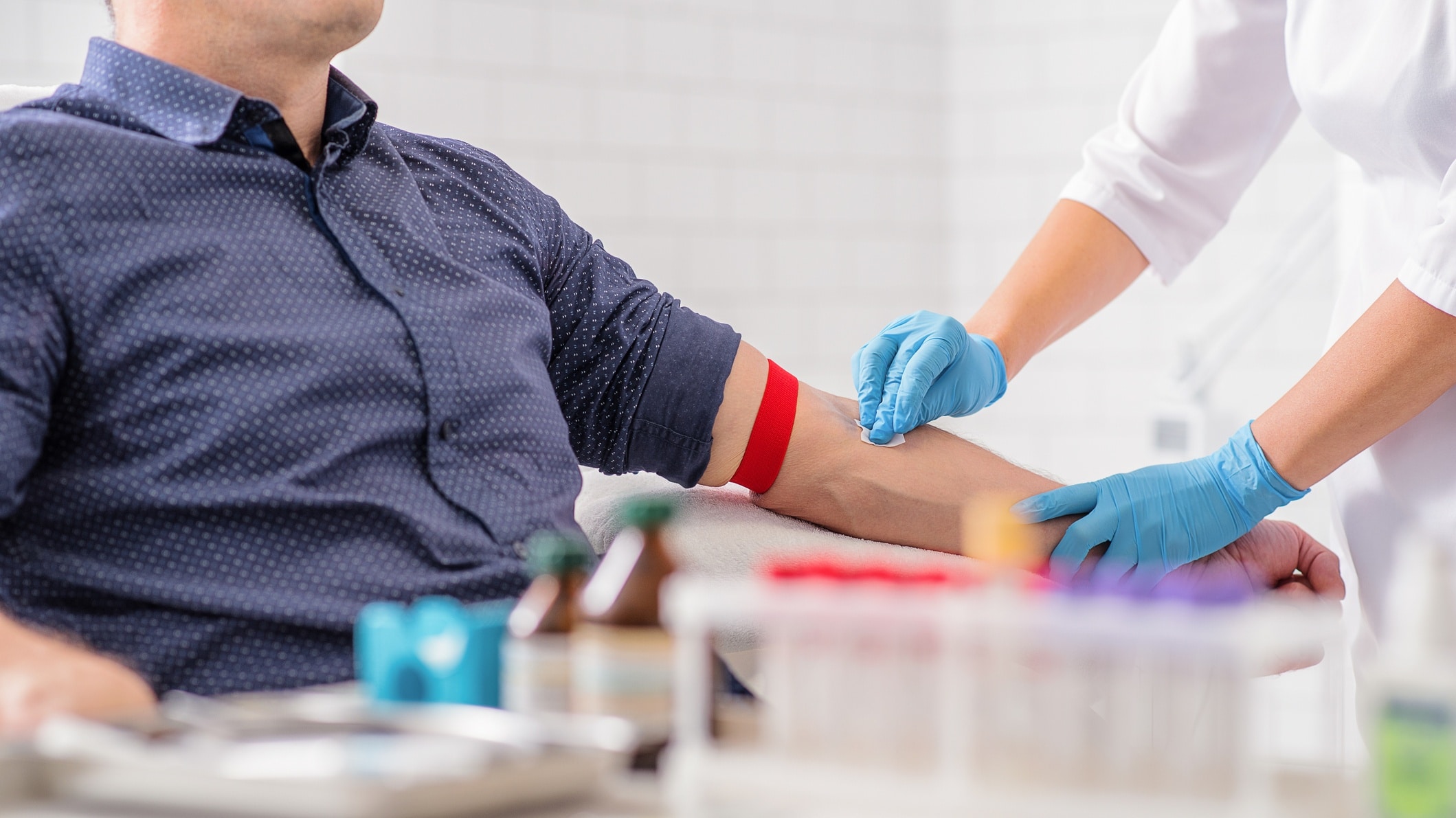Over 11 million doses of the vaccine have been given across the UK, and the number of blood clots reported following vaccination isn’t higher than the number of people that would’ve naturally got a blood clot in the vaccinated population.
The European Union has approved the safety of the AstraZeneca vaccine after pausing the rollout, so it is safe to receive.
Any medication that goes into circulation is subject to rigorous testing – no corners are cut, no matter how urgent the need. In the 1950s, the thalidomide scandal resulted in tighter testing on drugs when tens of thousands of deformed babies were born when pregnant women were prescribed it, so it is understandable that concerns around vaccinations and drug prescriptions must be investigated.
Interest in blood clots has surged because of recent news. myGP looked at Google Trend data to find out what users were searching for – assigning a score from 0 to 100 based on interest, and 100 being the highest.
According to the data, on 13th March 2021, interest scores for “blood clot symptoms” in the UK was 11, which is low. On the 15th March 2021, it had risen to 100.
Similarly, the interest score for “AstraZeneca blood clot” in the UK was on 0 on 11th March and skyrocketed up to 100 on the 14th March.
Following reports of blood clots following the AstraZeneca vaccine for COVID-19, there was understandably a need for these to be investigated.
However, it is important to acknowledge that the vaccine has since been approved again as “safe and effective” and concerns of blood clots were debunked.
If you’re concerned about the risk of blood clots, we’re here help give you accurate information about things that can contribute to blood clots, and how you can prevent them.
Smoking
Smoking can contribute to a vast majority of health problems, so it isn’t surprising that smoking cigarettes is on the list.
As well as damaging nearly every organ in your body, smoking is the leading preventable cause of disease and death.
Smoking significantly increases your risk of blood clots and will contribute to platelets sticking together, which are small cell fragments in our blood that clot to prevent bleeding.
Smoking damages the blood vessel lining, which can cause clots to form.
Atherosclerosis can arise from smoking, where plaque in the blood builds and sticks to the artery walls. These plaques of blood make your arteries smaller which reduces blood flow and can lead to blood clots.
- a heart attack
- blockages
- stroke
- coronary heart disease
Tips to stop smoking
Quitting smoking can be difficult – after all, it is an addiction. However, don’t feel like you are a “lost cause” and that the damage has already been done.
There is always time for you to better your health. Did you know that there are health benefits even after eight to 12 hours after quitting? Your blood carbon monoxide levels drop.
Two to three weeks after quitting, your risk of heart attack drops. One year after quitting, your risk of heart disease will be cut in half.
10 years after quitting, your risk of lung cancer falls to the same level of someone who never smoked.
If you’re looking to stop smoking, be positive. Follow these NHS guidelines to put down the cigarettes for good:
- Make a realistic plan to quit smoking.
- Consider your diet. Some foods can trigger your cravings, for example, if you enjoy an after-dinner cigarette following a meat-heavy meal.
- Change what you drink. Juice and water make you less likely to crave a cigarette.
- Avoid situations where you enjoy smoking.
- Get support from friends, family, or healthcare workers. Call the NHS Smokefree helpline on 0300 123 1044.
- Exercise more.
- Keep your hands and mouth busy.
Contraception
Estrogen-based contraceptives can contribute to your risk of a blood clot. Not only the pill, but patches, injections, or vaginal rings that deliver estrogen to the bloodstream can all cause an increased risk. Because of hormone changes, this can cause blood cells to form clots.
The risk of blood clots when on estrogen-based contraceptives is higher in:
- Those with a family history of blood clots.
- Those who have had surgery.
- Those who are obese.
- Those who go on prolonged travel.
Sometimes, the contraception we’re on best suits us. We might have fewer side effects on a specific type, we can access it easily and order prescriptions online, or generally prefer a certain method. To reduce your risk of blood clots while on estrogen-based contraception, you should:
- Maintain a healthy weight with diet and regular exercise.
- Drink enough water, particularly when travelling.
- Wear compression socks – get advice from your GP on this.
- Be aware of the symptoms – these may include chest pain, shortness of breath, upper body discomfort including int he arms, back, jaw, or neck, speech changes, paralysis, trouble speaking, and redness, pain, warmth, or swelling in the lower leg.
Pregnancy
Did you know that if you’re pregnant or have recently given birth, you are at higher risk of blood clots? Pregnant women are five times more likely to have a blood clot than a woman who isn’t pregnant.
Due to changes a woman’s body will go through, including less blood flow getting to the legs of pregnant women due to the pressure of a growing baby on the pelvis and limited mobility, this can increase the risk of blood clots.
You should speak to your doctor about your risk and if you have any and be aware of the symptoms.
Prolonged bed rest
Blood clots can arise due to prolonged bed rest. It is important to keep your blood flowing when you’re immobile for a significant period of time. For example, if you’re ill or are recovering from surgery, you need to keep your limbs active to encourage blood flow.
Compression stockings can also aid with this, designed to apply pressure to your legs to maintain blood flow.
COVID-19
Lastly, and most importantly – COVID-19. COVID-19 can cause blood clots, not the vaccination against it. Blood clots are seen in people who have been hospitalised with the virus.
According to Healthline, 31 percent of these patients had blood clot-related complications – it isn’t just old people that are at risk, but young people too.
To reduce your risk, you can follow the tips discussed throughout this article, like maintaining a healthy weight, regularly exercising, drinking water, and avoiding smoking.





